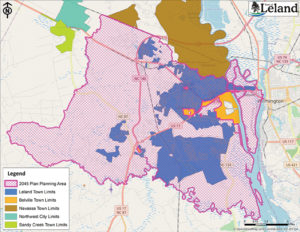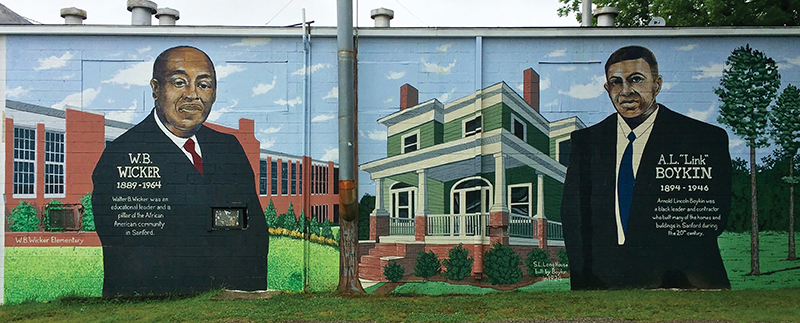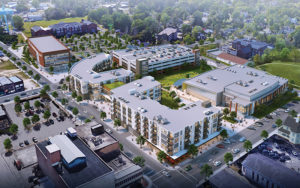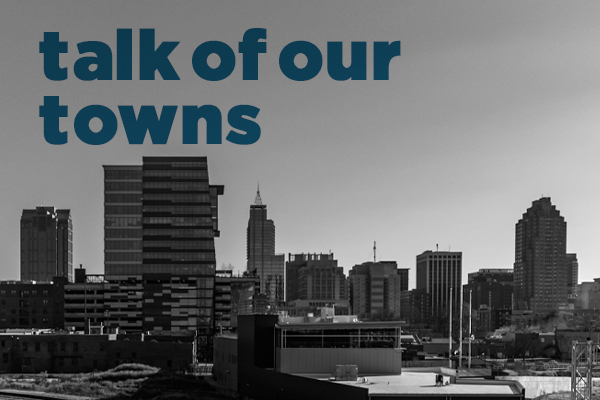The demands of the pandemic change almost daily, and our cities and towns are adapting. Community support, vaccine distribution, strategic development—the work of our municipalities is always impressive, but this period of public service may stand above the rest.
The ongoing pandemic has changed the pace or complexion of virtually everything in business, government, and personal life. Subsequently, municipalities—the governments closest to the people—have set their own, appropriate pace for delivering timely services and needed morale.
In one sense, nothing could check both of those boxes more sufficiently than the facilitation of the COVID-19 vaccine, particularly as the state reports persistently alarming hospitalization figures. Outreach from towns like Elon are informing residents about the state’s vaccine implementation plan with dedicated sections on the town website. “Our staff has developed a flexible action plan to help mitigate the spread of COVID-19 while continuing to provide essential Town services to our residents. As the situation continues to develop, the action plan will be updated,” it says. The Town of Beech Mountain too has created a clean place online to help locals schedule their shots. Lincolnton has been posting steady updates on the number of local active cases, with context, according to the data they’ve received from the county health department. “At this time, active cases remain lower than in past months, and continuance of control measures around the 3 W’s’ is strongly encouraged to reduce the risk of transmission within our community,” the city’s January 29 online update reported. Scores of North Carolina municipalities are doing the same, tailoring timely and vital information to the context of their communities.
It’s not solely the direct news from the pandemic front that communities need. The sense of place, connection, and pride remain essential ingredients of thriving communities. Sanford and Waxhaw are among those doing it well as we work to emerge from dark times and rediscover what it’s like to be together. The League’s podcast, Municipal Equation, highlighted a novel public art program Sanford had developed to bring eyes downtown, with vibrant murals telling the story of Sanford’s history, all with money raised outside of the government’s coffers. Just recently, the city announced $20,000 in more public art, lighting, and security enhancements, sourced from community nonprofits and the City of Sanford Public Arts Fund. The project will unfold on Charlie Watson Lane, named for a resident who for decades delivered the local newspaper to downtown businesses. “Charlie Watson Lane already attracts people to downtown Sanford,” Liz Whitmore, the city’s Historic Preservation Planner and liaison to the City of Sanford Appearance Commission, said in a news release. “We want to continue building it as a safe, visually interesting space that welcomes visitors and makes it convenient for them to patronize our restaurants and shops.” In Waxhaw, the city is rallying local artists to beautify a beloved local butterfly sculpture. As reported in the Charlotte Weekly, “There’s many different ways that we can help promote art for the town and different ways to actually see it and have interaction,” said Dena Sabinske, the local parks and rec director. “It gives you that warm and fuzzy feeling of coming down into Waxhaw and to have that interaction and pops of color we all know that provokes happiness.” The town is taking applications on its website from qualified artists for what they’re calling the Butterfly Project. “Downtown Waxhaw is a vital center of community activity, and we would like all residents and visitors to aesthetically enjoy their experience while walking the main shopping area,” the solicitation says.
 Despite the forced change of pace and the emphasis on perseverance in the moment, municipalities haven’t taken their eyes off long-term growth planning. Leland, which has experienced stellar growth over the past decade, kicked off 2021 by welcoming participation in its Leland 2045 project, with a home on the web at www.leland2045.com, to create a comprehensive plan for land use. A news release on the town’s main website cited the U.S. Census Bureau in reporting a population jump from 13,614 in 2010 to 23,544 in 2019, a 73 percent mushrooming, with projection models figuring similar growth in the decade to come. “Leland 2045 will create a community-driven vision for the growth and development of Leland while balancing the need for open space, environmental resiliency, housing opportunities, and places for the social well-being of residents and visitors” Ben Andrea, Leland’s planning and inspections director, said in the news release. “To be successful,” he added, “We need to hear from community members about their visions for the future of Leland.”
Despite the forced change of pace and the emphasis on perseverance in the moment, municipalities haven’t taken their eyes off long-term growth planning. Leland, which has experienced stellar growth over the past decade, kicked off 2021 by welcoming participation in its Leland 2045 project, with a home on the web at www.leland2045.com, to create a comprehensive plan for land use. A news release on the town’s main website cited the U.S. Census Bureau in reporting a population jump from 13,614 in 2010 to 23,544 in 2019, a 73 percent mushrooming, with projection models figuring similar growth in the decade to come. “Leland 2045 will create a community-driven vision for the growth and development of Leland while balancing the need for open space, environmental resiliency, housing opportunities, and places for the social well-being of residents and visitors” Ben Andrea, Leland’s planning and inspections director, said in the news release. “To be successful,” he added, “We need to hear from community members about their visions for the future of Leland.”


Pinetops is undertaking a similar effort, with an economic development assessment to identify key issues there. The town has launched a survey, being conducted by the state Department of Commerce, for locals to provide input. Wilson just facilitated a memorable spectacle in the demolition of the local BB&T Towers, part of a master plan the city developed for redevelopment of the downtown block it occupied. “When BB&T made such a bold commitment to build a new facility in downtown Wilson, we realized we needed to be strategic, using that investment to build momentum and leverage additional investment,” said Grant Goings, the city manager of Wilson, in an online update about the redevelopment project—to result in a mixed-use site with retail, residential, and parking—and the expectation that it will bring nearly $100 million of investment to the area. “We believe the impact of this block will be tremendous, a community-changing development of a scale unseen by cities of Wilson’s size.” Goings said it’s part of a “very intentional” chain of decisions. “…Because we only get one shot to get this right,” he said. “The Council believes that a master development agreement protects our public investments in the district and ensures a final product that is complementary to our community and a catalyst for future investment.”

Whether it’s lining up the immediate needs of residents and businesses to make it through the pandemic together, or work on community spirit and responsible future planning, North Carolina’s municipalities seem to have barely flinched against the challenges. Collectively, they’re helping to put North Carolina overall in the best possible positioning for the road ahead.













